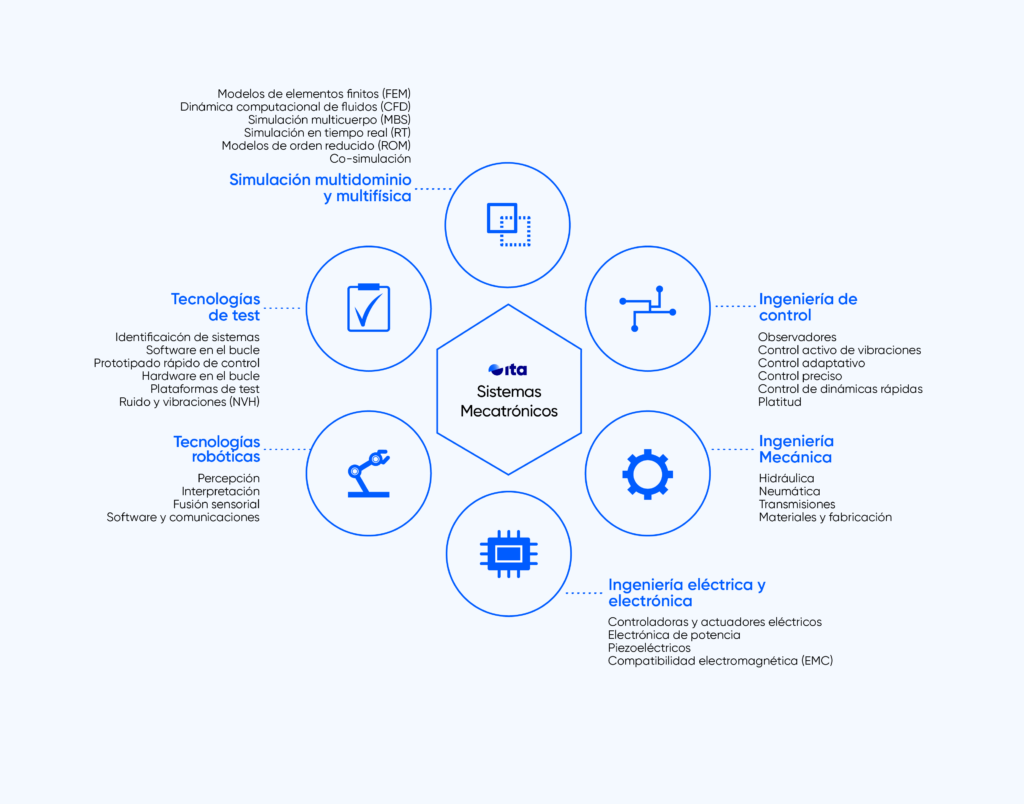
Mechatronics is defined as the grouping of mechanical, electronic, control and software engineering as a vehicle to enable innovation in products, machines and production processes.
In keeping with this multidisciplinary approach, the Institute has expanded these traditional synergies with a technology that is constantly being developed, the roboticsThis allows extending the scope of the solutions with systems that are more intelligent in their interaction with the environment, capable of making decisions in more complex environments and with a higher level of autonomy.
Due to the intrinsic multidisciplinary nature of the group, the work teams are made up of profiles with varied backgrounds: mechanical, electronic and computer engineers. In terms of degree level, it is distributed as follows: 14% of PhDs, 56% of Higher Engineers, 30% of Technical Engineers.
The team’s activities are organized around three major work teams:
Experts in multiphysics and multidomain dynamic simulation and in the use of models for system design and control. MBSE approach for verification and validation using X-in-the-loop techniques.
Multidisciplinary profiles with expertise in new product design methodologies, test benches and intelligent systems.
Electrical, electronic and computer engineers with expertise in advanced automation and robotization of machinery to perform functions autonomously.

This organization is flexible while at the same time allowing to enhance technological knowledge among the different between the different working groups and the formation of cross-cutting project cross-cutting project teams.
Of the eleven lines that make up the Institute’s Scientific-Technological Plan, these two are the ones related to the activity of the Mechatronics and Robotics team:
Methodologies and tools based on modeling and simulation, and their application to the design, verification and complete life cycle of products, processes and complex multidisciplinary systems (electronics, software, mechanics, …). The focus is on reducing time and costs, while increasing efficiency, safety, reliability and functionality and reducing environmental, economic and social impact.
Design and development of robust and safe robotic systems capable of moving and interacting with their environment using intelligent on-board perception systems, advanced sensory fusion and navigation techniques. In this PT we focus on the development of collaborative multi-robot and hybrid co-simulation systems applied to industry, environment and people.
In addition, to highlight the two of Applied Research recognized by the Government of Aragon with a total of 58 effective researchers (31 of them with PhDs):
DIGIZITY Investigación industrial de soluciones innovadoras para descarbonizar, digitalizar y automatizar el transporte urbano con autobuses 0 emisiones.